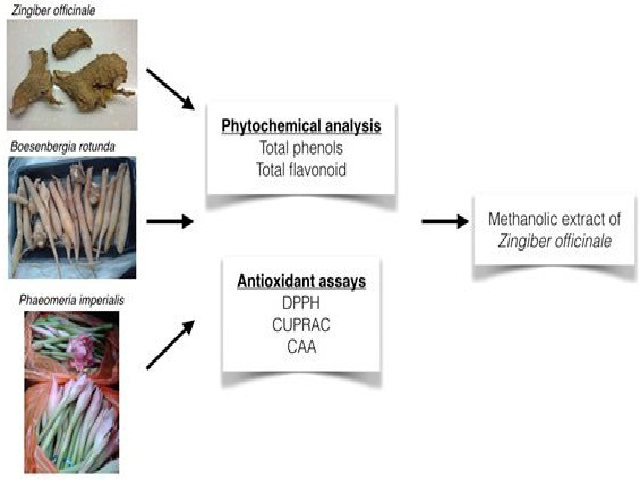Chemical- and Cell-based Antioxidant Capacity of Methanolic Extracts of Three Commonly Edible Plants from Zingiberaceae Family
DOI:
https://doi.org/10.5530/fra.2017.1.9Keywords:
Antioxidant, CUPRAC, DPPH, CAA, ZingiberaceaeAbstract
Background: Edible plants belonging to the Zingiberaceae family display various antioxidative properties and widely used as folklore medicines. Three edible plants in Zingiberaceae family; namely Boesenbergia rotunda, Phaeomeria imperialis and Zingiber officinale were selected for secondary metabolites extraction using methanol. All crude extracts were investigated to evaluate their phenolics and flavonoids contents and further compare their antioxidant properties. Methods: Total phenolic content and total flavonoid content were evaluated using Folin-Ciocalteu method and Aluminium Complexation Reaction respectively. Conventional DPPH (2,2-diphenyl-1-picryl-hydrazyl), revolutionary CUPRAC (cupric ion reducing antioxidant capacity) and cellular antioxidant activity (CAA) in vitro assays were employed to evaluate the antioxidant activities of methanolic plant extracts for the first time. Results: DPPH and CUPRAC antioxidant assays resulted in similar trend to total flavonoid content in the order Z. officinale >P. imperialis>B. rotunda where as P. imperialis revealed highest phenols content and displayed highest CAA. Conclusion: Methanolic extract of Z. officinale showed highest free radical scavenging ability and hence flavonoids present may potentially act as natural source of antioxidant.
Downloads
Metrics





